Investigate the fascinating question of whether mason bees can utilize red clay soil for their nests, a query crucial for bee conservation efforts.
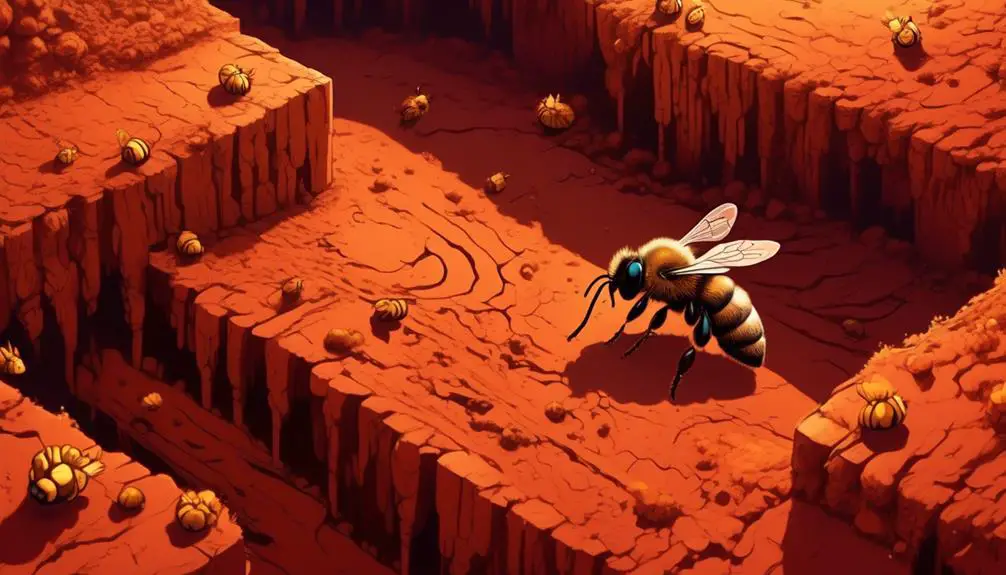
Can Mason Bees Use Red Clay Soil?
Imagine you're an architect, and your client insists on building their dream home with a specific type of material, say, red clay soil. Just like that architect, you'd need to know if that material is suitable for the task at hand.
Well, it's the same with mason bees. As you may know, these industrious insects are renowned for their ability to construct their nests from various types of soil. But the question that has been buzzing in the minds of many apiculture enthusiasts and researchers is: can mason bees use red clay soil for their construction needs?
It's not just a question of curiosity, but one that could have significant implications for bee conservation efforts. Stick around, and we'll explore this intriguing issue together.
Key Takeaways
- Mason bees prefer red clay soil for their nesting process.
- Red clay soil allows precise nest shaping due to its texture.
- Red clay soil is rich in minerals and nutrients, benefiting mason bees' nutrition.
- Different soil types, including red clay, have a significant impact on bee populations and their overall health.
Understanding Mason Bees' Habits
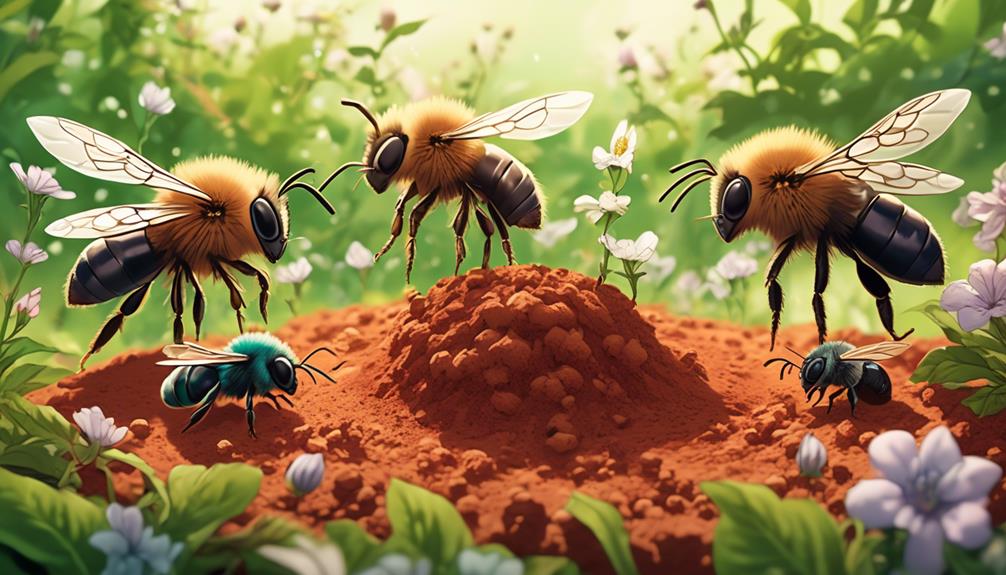
While observing Mason bees, you'll notice that these industrious insects have a fascinating habit of using red clay soil in their nesting process, meticulously collecting it with their mandibles for constructing their egg chambers. This behavior isn't random; it's a vital part of their reproductive strategy.
You'll often find them buzzing around clay-rich areas, their tiny bodies dusted with a reddish hue. See how they scrape at the soil, gathering tiny particles? They're not just playing in the dirt; they're gathering building materials.
Once they've collected enough, they'll return to their nest, a hollow tube or crevice often in wood or stonework. Watch as they manipulate the clay with their mandibles, compacting it into the back of their chosen nest site. This forms the back wall of the first egg chamber.
Next, they'll lay an egg, provision it with pollen and nectar, and then seal it off with more of the red clay. This process is repeated until the tube is filled with a series of these clay-encased chambers. It's a unique, effective method of ensuring their offspring's survival.
You'll never view a simple patch of red clay the same again.
Characteristics of Red Clay Soil
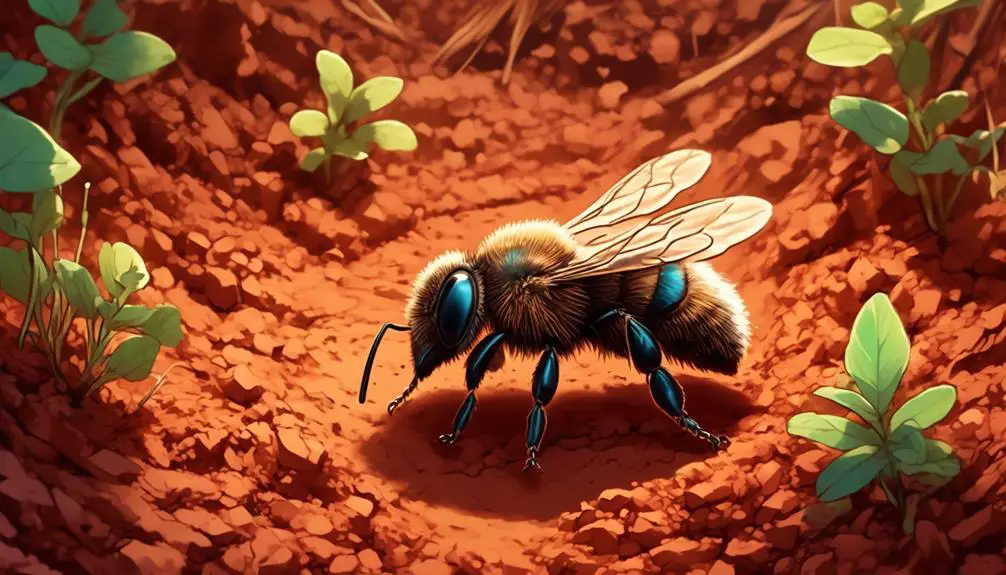
Now, let's take a closer look at the red clay soil itself, the very material these Mason bees favor for their intricate nesting process. Red clay soil, scientifically termed as 'Ultisols,' is a type of soil that's rich in iron oxides, giving it its distinctive red hue.
The granular structure of this soil is fine to medium, making it compact and hard when dry, yet sticky and pliable when wet. Its high clay content allows it to retain water well, but it's also slow to drain, which can make it difficult for some plants to thrive. However, it's this very characteristic that makes it an ideal material for the Mason bees' nests.
Red clay soil is also known for its high nutrient content, particularly in phosphorous, potassium, and magnesium. Yet, its acidity levels can be high, often requiring lime to balance its pH for plant growth. Despite this, the soil's rich mineral content makes it fertile and beneficial for many ecosystems.
Mason Bees and Soil Preferences
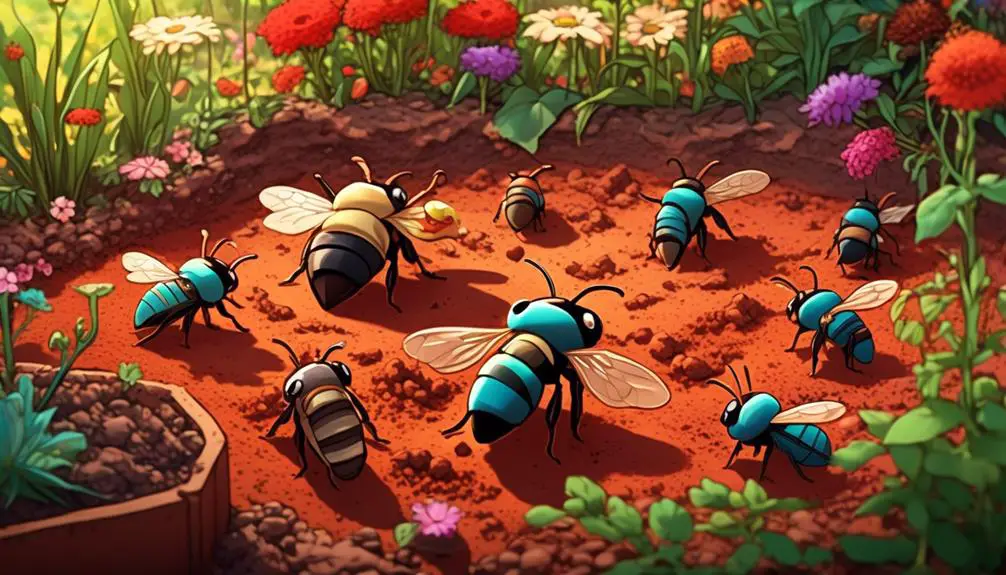
In examining the peculiar preferences of Mason bees, you find a striking affinity for red clay soil, prized for its texture and mineral richness, which they utilize extensively in their nest construction. But why exactly do they prefer this type of soil?
Firstly, its texture plays a significant role. Mason bees are solitary insects, meaning they don't live in colonies like their honeybee counterparts. Instead, they construct individual nests for their larvae, often in tubular crevices. The fine-grained texture of red clay soil allows them to shape these nests meticulously, offering an ideal breeding environment.
Secondly, red clay soil is rich in vital minerals such as iron and aluminum. These minerals not only contribute to the soil's distinct red hue but also have a beneficial impact on mason bees' health and longevity.
However, it's worth noting that while they show a preference for red clay soil, mason bees can adapt to a variety of soil types if necessary. Their resourcefulness and adaptability are part of what makes these insects such fascinating subjects of study.
The Suitability of Red Clay for Bees

Despite their adaptability, mason bees find red clay soil particularly suitable due to its unique properties that cater to their nesting and nutritional needs. Red clay is dense and heavy, providing a stable, secure area for these bees to construct their nests. It's an ideal medium that allows them to shape and model their homes with precision.
The minerals, primarily iron oxide, that give red clay its characteristic color also contribute to its nutritional value. These minerals are essential for the bees' health and development. They're accessible to the bees when they consume the clay, facilitating their growth and reproduction process.
Furthermore, red clay soil holds moisture well, which is beneficial for the mason bees. This moisture is crucial for the bees to mold their nests and helps maintain a suitable environment for the larvae to develop.
Lastly, the bees' preference for red clay could be attributed to its thermal properties. Red clay absorbs and retains heat well, providing a warm, conducive environment for the bees and their offspring.
Impact of Soil Types on Bee Populations
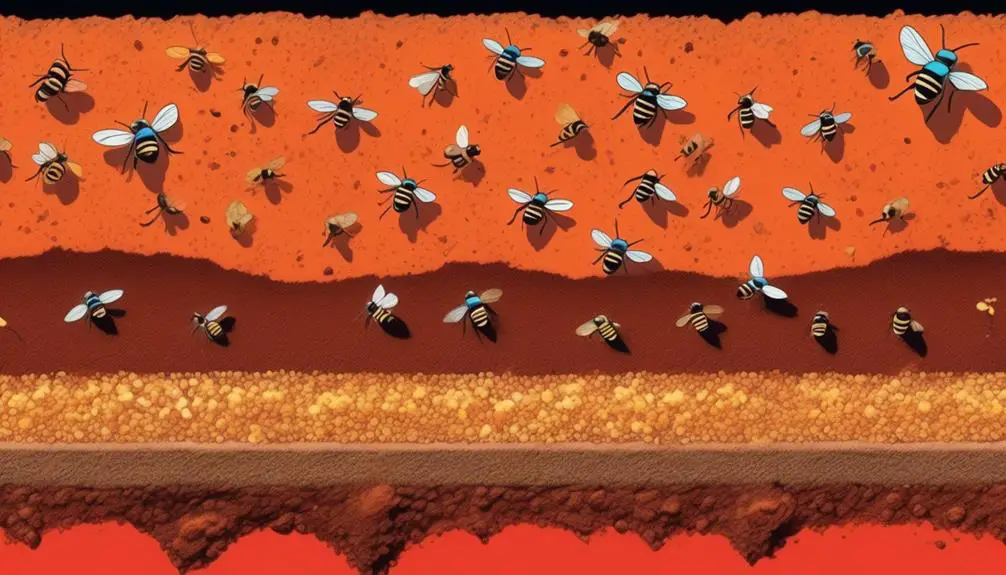
Understanding the symbiotic relationship between soil type and bee populations reveals a noteworthy impact on the survival, reproduction, and overall health of these crucial pollinators. Various soil types, such as loamy, sandy, or clay, can either foster or hinder the prosperity of bee communities.
You'd observe that bees, particularly Mason bees, show a preference for loamy and sandy soils. These soils are loose, well-drained, and easy to burrow into, making them ideal for nesting and reproduction. Bees can dig tunnels, lay eggs, and form protective cocoons without much resistance. Furthermore, these soil types promote the growth of diverse plant species supplying ample nectar sources.
Now let's consider clay soils. You might think that its dense, compact nature would deter bees. However, red clay, though challenging to burrow into, provides significant advantages. It's rich in minerals, which are essential for bee health. Additionally, its ability to retain moisture encourages the growth of certain plants, providing food sources for bees.
Conclusion
Yes, you've got it! Mason bees can indeed utilize red clay soil. This soil type, rich in minerals and often heavier than others, suits their needs for making nesting tunnels.
However, it's the availability of this soil, not necessarily its type, that impacts bee populations most. Remember, these industrious little creatures are adaptable, and they'll work with different soil types if need be.
So, let's keep providing diverse habitats to support our buzzing friends!


